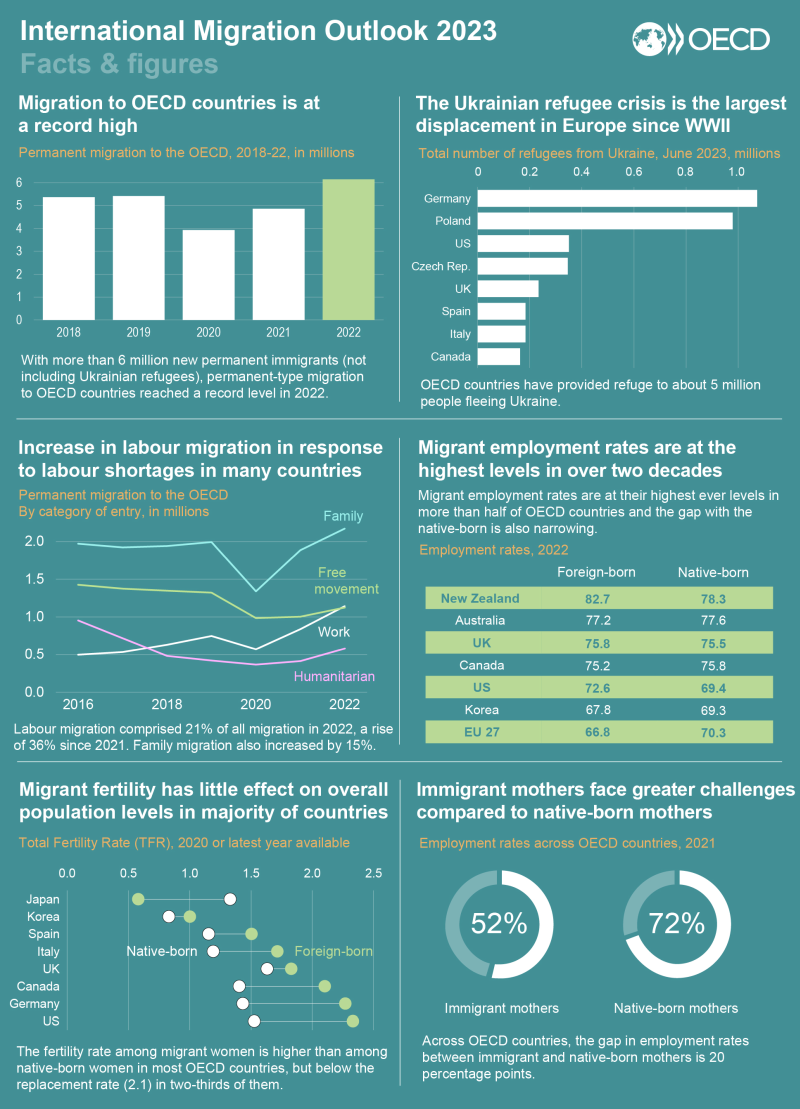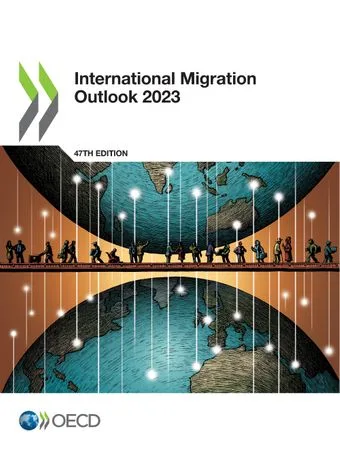International Migration Outlook 2023 released by OECD
The 2023 edition of International Migration Outlook analyses recent developments in migration movements and the labour market inclusion of immigrants in OECD countries. It also monitors recent policy changes in migration governance and integration in OECD countries.
This edition includes two special chapters on the labour market integration of migrant mothers and on fertility patterns among migrant populations in OECD countries.

Migration flows are at a record high
Migration to OECD countries is at unprecedented levels. With more than 6 million new permanent immigrants (not including Ukrainian refugees), permanent-type migration to OECD countries reached a record level in 2022.
Asylum applications in the OECD were also at a record high in 2022. Over 2 million new applications were lodged in OECD countries in 2022, the highest number recorded so far, well above the 2015/16 previous record of 1.7 million and twice the 2021 level. The increase was largely driven by soaring applications in the United States, at 730 000 compared with less than 190 000 in 2021
Labour market outcomes of immigrants are at the highest levels since the beginning of the millennium
Between 2021 and 2022, the employment rate of migrants improved in all OECD countries except Poland – which had high inflows of refugees from Ukraine – and reached the highest level on record, OECD-wide.
In light of growing labour needs, labour migration is high on the policy agenda, while trends in integration were marked by the specific needs of refugees from Ukraine
The recorded increases in both new labour migration and the employment rate of resident migrants are linked to the fact that many countries in the OECD are experiencing labour shortages. This has pushed labour migration high on the policy agenda. Several countries, including Australia and Germany, are planning significant changes in their labour migration frameworks, while others have increased their targets for labour migration.
Immigrant mothers face specific challenges
The childbearing behaviour of migrants plays a rather limited role in population dynamics. While migrant women tend to have more children than their native-born peers, their total fertility rate is still below the replacement rate (2.1 children per woman) in most OECD countries.
Key findings of International Migration Outlook 2023
- Permanent-type migration to OECD countries increased by 26% in 2022 compared with 2021. Preliminary figures for 2023 suggest a further increase.

- Family migration remained the primary category of entry for new permanent-type migrants, representing 40% of all permanent-type migration, while managed labour migration and free mobility both accounted for 21% each.
- The top origin countries for asylum applicants within the OECD in 2022 were Venezuela (221 000), Cuba (180 000), Afghanistan (170 000) and Nicaragua (165 000).
- In more than half of OECD countries, the employment rate of migrants is at the highest in more than two decades.
- Immigrant mothers face a disproportionate disadvantage, both compared with immigrant women without children and vis-à-vis their native-born peers. On average across the OECD, the gap in employment rates between immigrant and native-born mothers is 20 percentage points.
About Organisation for Economic Co-operation and Development (OECD)
Genesis: Transformed into OECD in 1961, it was originally formed as Organisation for European Economic Co-operation (OEEC) to administer American and Canadian aid under Marshall Plan.
About: It is an international organization which brings together Member countries and a range of partners that collaborate on key global issues at national, regional and local levels
Members: 38 countries including USA, Mexico, Australia, Canada, France, Japan, UK. (India is not a member).
Role: OECD countries and partners represent about 80% of world trade and investment.
